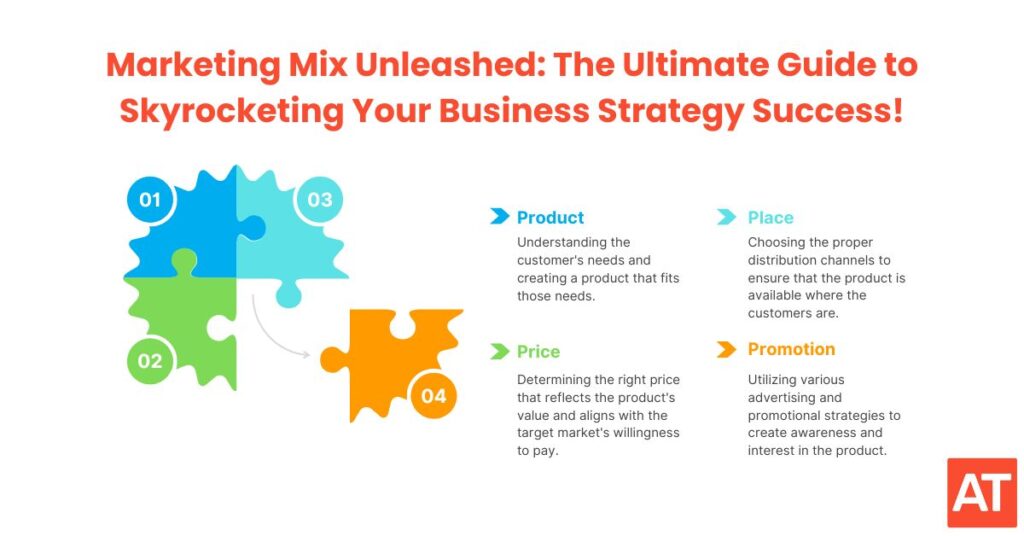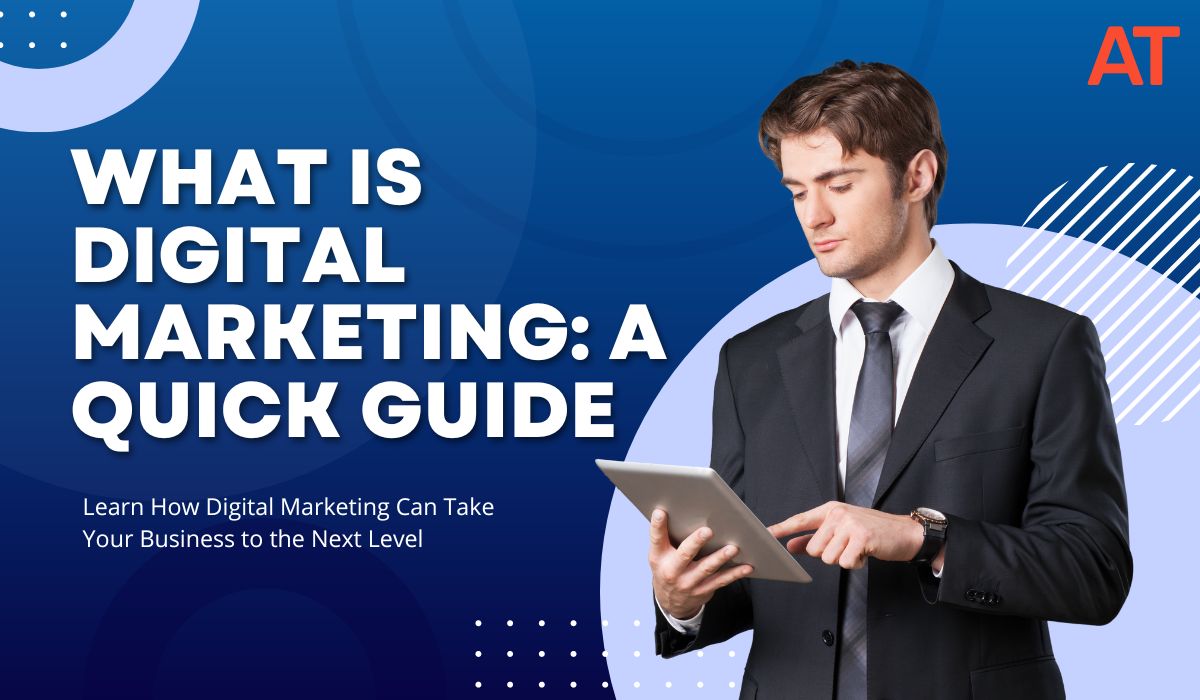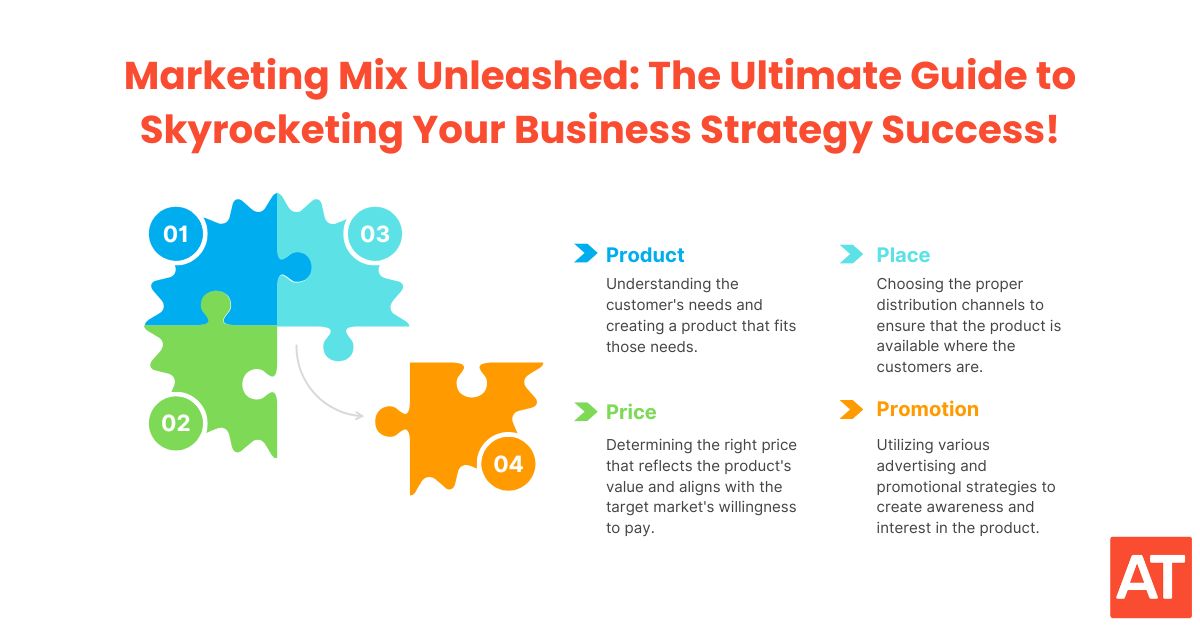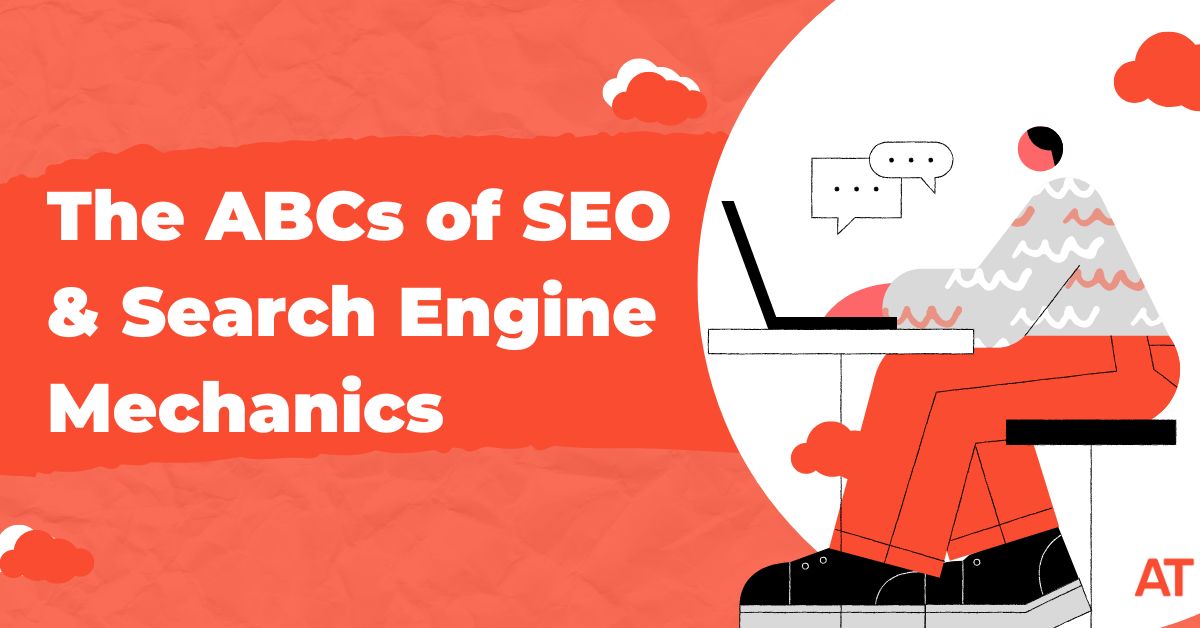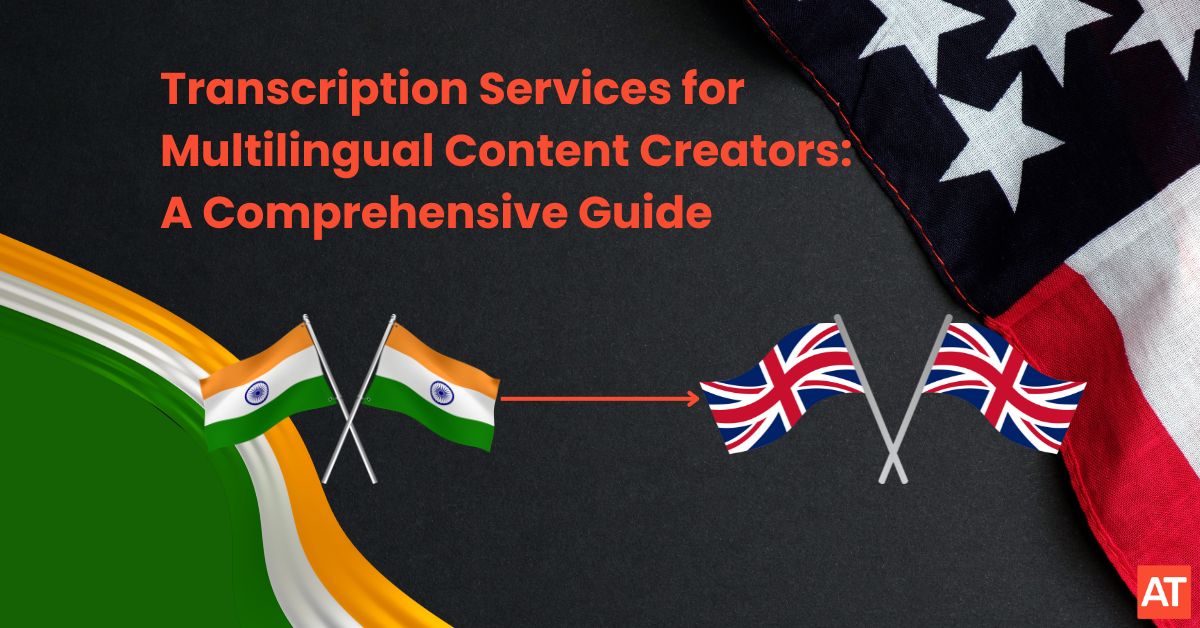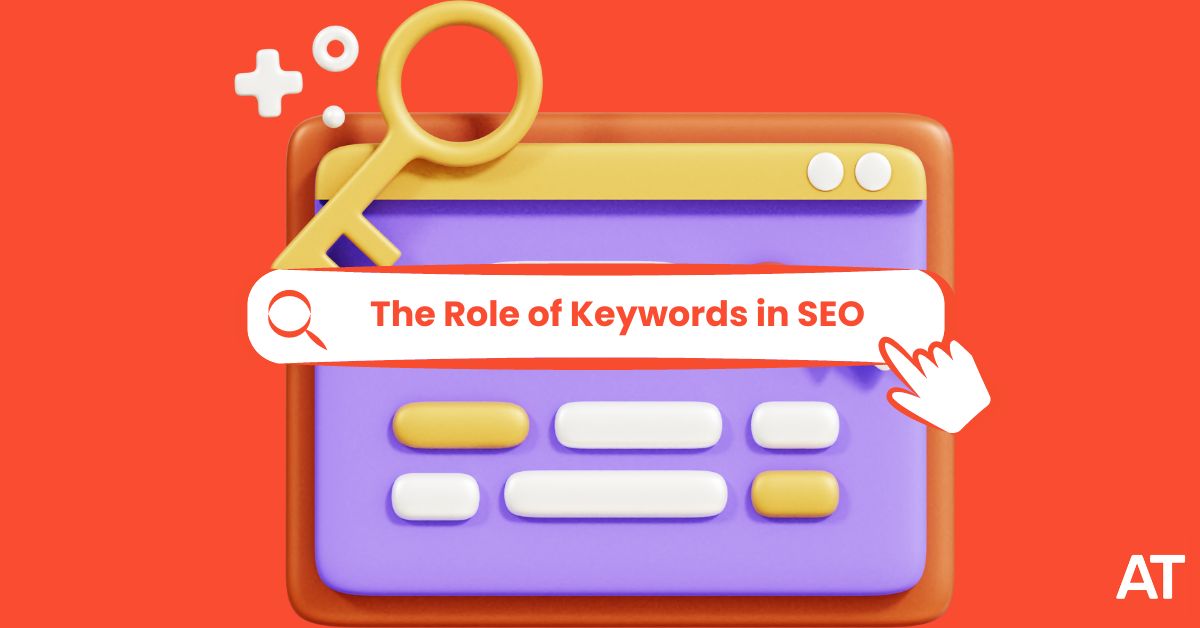Table of Contents
ToggleIntroduction
The marketing mix is a term that’s more than just a buzzword in the business world. It’s an essential part of any effective marketing plan, encompassing the vital elements of the 4 Ps: Product, Price, Place, and Promotion. But what exactly is the marketing mix, and why is it essential in today’s competitive marketplace?
The marketing mix is a collection of variables a business can manage to persuade customers to buy its goods or services. Delivering the appropriate product, at the right price, in the right location, and using the best promotion strategies is more important than simply making sales. Anfinit Technologies understands this intricate balance and offers tailored solutions to help businesses navigate the complexities of the marketing blend.
In this article, we’ll explore:
- The evolution of the marketing mix from the traditional 4 Ps to the expanded 7 Ps.
- The digital transformation of the marketing mix.
- The advantages and disadvantages of using the marketing mix.
- Practical insights and real-world applications.
- How Anfinit Technologies can assist you in implementing an effective marketing blend strategy.
Stay with us as we delve into the fascinating world of the marketing mix and uncover the secrets to leveraging it for business success.
The Evolution of Marketing Mix
Traditional 4 Ps
The fundamental 4 Ps served as the beginning point for the evolution of the marketing mix concept.
- Product: Understanding the customer’s needs and creating a product that fits those needs.
- Price: Determining the right price that reflects the product’s value and aligns with the target market’s willingness to pay.
- Place: Choosing the proper distribution channels to ensure that the product is available where the customers are.
- Promotion: Utilizing various advertising and promotional strategies to create awareness and interest in the product.
These 4 Ps form the core of the marketing blend and have been the cornerstone of marketing strategies for decades.
Expansion to 7 Ps
As the business landscape changed, the marketing mix expanded to include three additional elements known as the 7 Ps:
- People: The staff and sales team who interact with customers.
- Process: The steps, controls, and order of operations used to supply the good or service.
- Physical Evidence: Customers might evaluate an intangible service by comparing it to tangible elements like packaging or a physical location.
This expansion recognizes the importance of human interaction, efficient processes, and tangible cues in influencing customer decisions.
Introduction of 4 Cs
Some marketers have further reinterpreted the marketing mix to focus on the customer’s perspective, known as the 4 Cs:
- Consumer: Understanding customer needs and preferences.
- Cost: Considering the total cost to the consumer, including time and effort.
- Convenience: Making the product easily accessible and convenient to purchase.
- Communication: Engaging in two-way communication with customers rather than one-way promotion.
Detailed Exploration of the Marketing Mix Components
Product
The product is the tangible item or intangible service that meets the customer’s needs. It includes design, features, quality, branding, and warranty.
Price
Price is the amount charged for the product or service. Factors like production cost, competition, perceived value, and market demand influence it. Pricing strategies can vary from cost-based to value-based, and Anfinit Technologies offers insights into selecting the right approach.
Place
Place refers to the distribution channels to make the product accessible to customers. It includes retailers, wholesalers, online platforms, and direct sales.
Promotion
Promotion encompasses advertising, sales promotion, public relations, personal selling, and content marketing. Businesses have the potential to offer valuable and informative content marketing to attract and retain a specific audience.
People
People include the staff, sales team, and customer service representatives who interact with customers. Training and motivation are crucial to ensuring positive customer experiences.
Process
The process involves the procedures and flow of activities that deliver the product or service. Efficiency and consistency are vital in building trust and satisfaction.
Physical Evidence
Physical evidence includes tangible aspects like packaging, brochures, or a physical store that helps customers evaluate the intangible service.

Digital Marketing Mix
In today’s digital age, the traditional marketing mix has evolved to adapt to online sales and digital platforms. The digital marketing mix considers the same fundamental principles but applies them in the context of online marketing.
Adaptation to Online Sales
E-commerce and online shopping have transformed the way products are sold and purchased. The “Place” component now includes online stores, marketplaces, and social media platforms. Convenience and accessibility are critical factors in the digital landscape.
Social Media Channels
Social media and content marketing play a vital role in the ‘Promotion’ aspect of the marketing mix. Platforms like Facebook, Instagram, Twitter, and LinkedIn allow businesses to engage with customers through targeted content marketing strategies.
Websites and Online Presence
A well-designed website and strong online presence are essential in conveying the “Physical Evidence” of a digital product or service. It’s about creating trust and credibility through user-friendly design, clear information, and positive online reviews.
Email Marketing
Along with social media, email marketing is vital in the digital marketing mix, allowing businesses to reach potential customers directly.
Engaging Content
Social media and email marketing platforms enable creating and sharing engaging content to connect with the target audience. The digital transformation of the marketing mix offers new opportunities and challenges. Consider the unique dynamics of online marketing and ensure that the product, price, place, and promotion align with the digital consumer’s expectations and behavior by using a strategic approach.
Advantages of Using Marketing Mix
The marketing mix is not just a theoretical concept; it offers tangible advantages that can drive business success. Here’s a look at some of the key benefits:
Cohesive Strategy Creation
By considering the 7 Ps, businesses can create a cohesive and comprehensive marketing strategy that aligns with their goals and target audience.
New Product Development
The marketing mix guides the development of new products to ensure they meet customer needs, price them appropriately, and promote them effectively.
Product Portfolio Expansion
It aids in expanding the product portfolio, allowing businesses to diversify and reach different market segments.
Differentiation and Dynamic Response
The marketing mix enables differentiation from competitors and dynamic response to market changes, ensuring the product remains relevant and competitive.
Enhanced Customer Engagement
Through targeted promotion and understanding customer needs, the marketing elements enhance engagement and builds lasting relationships.
Efficient Resource Utilization
By aligning the product, price, place, and promotion, businesses can utilize resources efficiently, avoiding unnecessary costs and maximizing returns.
Best Practices
Implementing best practices in pricing strategy, promotion, and distribution leads to efficient resource utilization.
Customer Loyalty
Through targeted promotion and understanding customer needs, it enhances engagement and builds customer loyalty. These advantages highlight the practical value of the marketing elements in various aspects of business strategy and operations. Implementing the marketing mix can effectively increase sales, customer satisfaction, and long-term success.
Importance and Applications in Various Contexts
Various contexts apply the principles and applications of the marketing mix, indicating its universal relevance and not just limited to traditional business organizations.
Influencing Demand
The marketing mix significantly influences consumer demand. Businesses can attract and retain customers by aligning the product, price, place, and promotion.
Resource Utilization
Efficient use of resources is vital for cost-effectiveness. Allocating resources optimally and aligning with marketing objectives and budget constraints are ensured by the marketing mix.
Cost Effectiveness
The marketing mix can achieve cost-effective marketing through strategic pricing and targeted promotion, maximizing ROI and minimizing unnecessary expenses.
Short-Term and Long-Term Changes
The marketing mix allows flexibility in responding to short-term market fluctuations and long-term industry trends. It enables businesses to adapt and evolve.
Business and Non-Business Organizations
Beyond traditional businesses, the marketing mix applies to non-business organizations like schools, associations, and clubs. It aids in promoting services, events, and causes.
Global and Local Markets
Whether targeting global markets or focusing on local communities, it provides a framework for understanding and reaching diverse audiences.
The importance of the marketing mix transcends industries and sectors. Its principles guide marketing efforts across different contexts, offering a versatile tool for achieving marketing success.

Weaknesses and Criticisms of the Marketing Mix
While the marketing mix is a powerful tool, it has its criticisms and weaknesses. Understanding these aspects is essential for a balanced perspective:
Omission of Services
The traditional 4 Ps model primarily focuses on tangible products, often overlooking the unique characteristics of services. This can lead to gaps in service marketing strategies.
Seller-Centric View
The seller-centric approach of the original marketing structure, which emphasized what the business wanted to sell more than the customer wanted to buy, is frequently criticized. The introduction of the 4Cs model has addressed this to some extent, focusing on the consumer’s perspective.
Limited Focus on Relationships
The marketing blend may need to adequately address relationship marketing, emphasizing long-term customer engagement and loyalty. It tends to focus more on transactional aspects.
Potential for Conflicts
Without careful coordination, the marketing mix elements can lead to conflicts. For example, a high-quality product priced too low may send mixed signals to consumers.
Lack of Emphasis on External Factors
The marketing blend mainly focuses on controllable factors, often neglecting external influences like competition, economic conditions, and the regulatory environment.
By recognizing these weaknesses and criticisms, marketers can use the marketing mix more effectively, complementing it with other tools and approaches to address its limitations.
Integrating Key Marketing Aspects into the Marketing Mix
The marketing mix integrates various elements essential for reaching and engaging customers. Companies use this multifaceted tool to create effective marketing strategies and increase sales.
Potential Customers
Promotion encompasses advertising, sales promotion, public relations, personal selling, content marketing, and email marketing to attract potential customers.
Target Audience
Place refers to the distribution channels to make the product accessible to the target audience.
Marketing Campaign
A well-coordinated marketing campaign, including email marketing, ensures a consistent message across all marketing channels.
Customer Loyalty
People include the staff and customer service representatives interacting with customers, building customer loyalty.
Valuable Content
Businesses can utilize content marketing to produce meaningful content that appeals to and interacts with a specific group of people.
Pricing Strategy
Price is the amount charged for the product or service, influenced by factors like production cost and pricing strategy.
Marketing Channels
Place includes retailers, wholesalers, online platforms, and direct sales as marketing channels to reach prospects.
How to Identify and Implement a Marketing Mix
Finding and implementing the ideal marketing mix calls for extensive thought and planning and is a strategic process. Here is an easy-to-follow guide to assist you in understanding this crucial marketing component:
Target Customer Analysis
Understanding your target customer is the foundation of the marketing mix. Analyze demographics, psychographics, needs, and preferences to tailor your product, price, place, and promotion.
Sales and Growth Goals
Define clear sales and growth goals to guide your marketing mix decisions. Aligning the 7 Ps with your business objectives ensures a cohesive and targeted approach.
Marketing Budget Considerations
Consider your marketing budget and allocate resources efficiently across the 7 Ps. Balancing quality and cost is vital to achieving cost-effective marketing.
Competitive Analysis
Analyze your competitors and differentiate your offering through unique value propositions, pricing strategies, and promotional tactics.
Coordination and Integration
Coordinate the elements of the marketing mix to avoid conflicts and inconsistencies. Integration ensures a seamless and consistent customer experience.
Monitoring and Adjustment
Regularly monitor the performance of your marketing mix and make necessary adjustments to respond to market changes and customer feedback.
Market Research
Understanding your target customer requires comprehensive market research to tailor your product offering.
Competitors
Analyze your competitors and differentiate your offering through unique value propositions.
Prospects
Coordinate the elements of the marketing mix to reach prospects effectively.
Customer Success
Regular monitoring and adjustment ensure customer success and responsiveness to market changes.
Case Study
Consider collaborating with experts and reviewing case studies to tailor your marketing blend to your industry.
Collaboration with Experts
Consider collaborating with experts like Anfinit Technologies to tailor your marketing mix to your specific industry, market, and goals. Expert guidance can enhance effectiveness and efficiency.
By following these steps, businesses can identify and implement a marketing mix that aligns with their unique needs, market dynamics, and strategic objectives.

Conclusion
The marketing mix is more than a theoretical concept; it’s a practical and versatile tool that shapes the success of businesses across industries and contexts. From the traditional 4 Ps to the expanded 7 Ps and the digital transformation, it continues to evolve, reflecting the dynamic nature of marketing today.
Understanding the components of the marketing blend, recognizing its advantages and weaknesses, and implementing it can effectively lead to cohesive strategies, targeted engagement, and sustainable growth.
Collaboration with experts like Anfinit Technologies can further enhance the process, providing tailored solutions that align with specific needs and goals. Whether you’re a seasoned marketer or a business owner looking to understand the essentials, the marketing mix offers valuable insights and practical applications.
Embrace its principles, including content marketing, navigate its complexities, and leverage its potential to drive your business success. Content marketing is a highly effective strategy for engaging customers and establishing enduring connections, which makes it a crucial component of the marketing mix.
It is a timeless and adaptable tool that guides marketing success. Embracing its principles, understanding its evolution, and implementing it can strategically be a catalyst for achieving your business goals.

